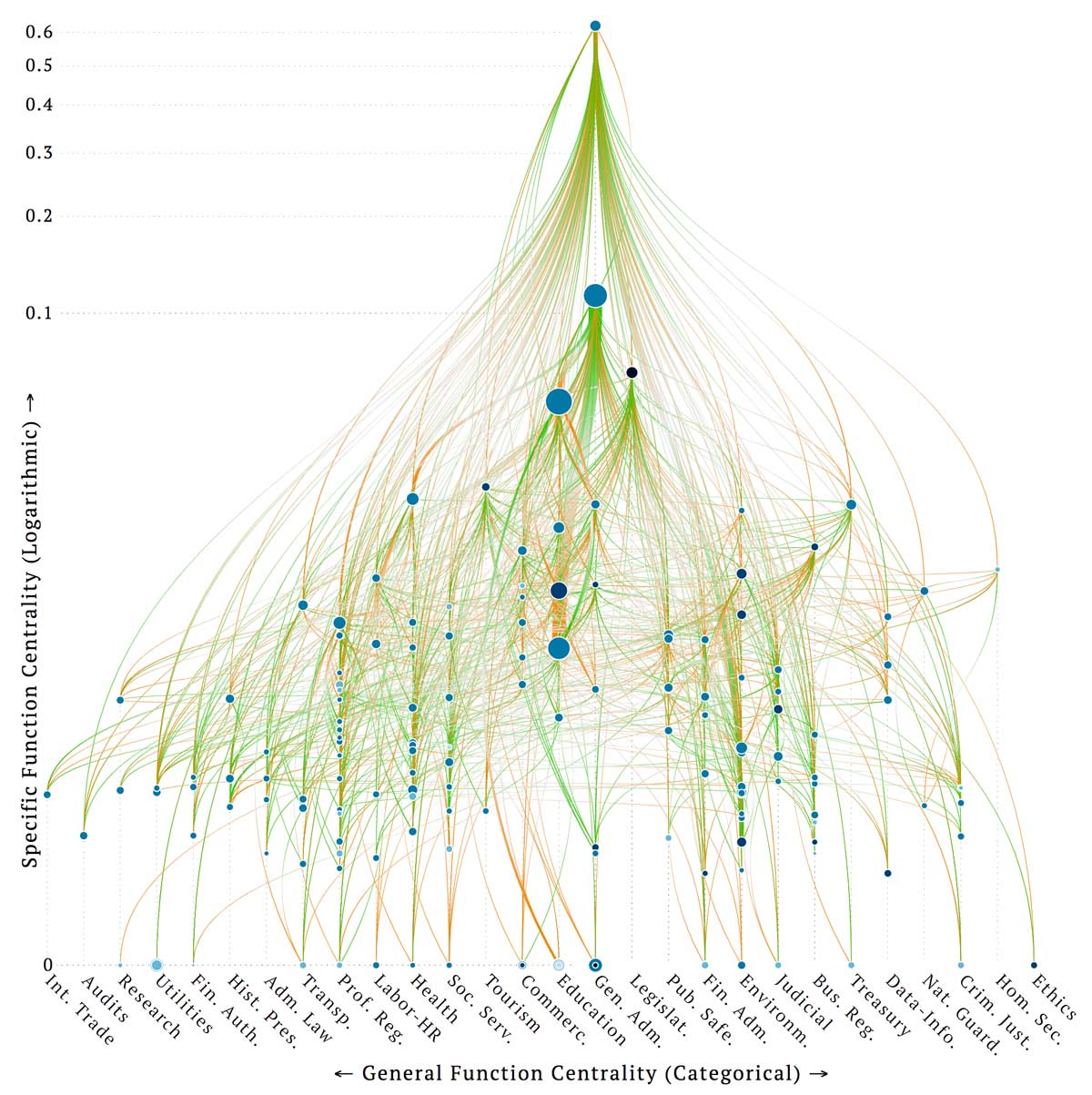
project
01/06/2015 – 03/10/2018
Barabasi Lab
In collaboration with Stephen Kosack, Michele Coscia, Evann Smith, Albert-László Barabási, Ricardo Hausmann
Government Structure
The online footprints of modern governments open a new window to understanding them. Governments in modern societies undertake an array of complex functions that shape politics and economics, individual and group behavior, and the natural, social, and built environment. How are governments structured to execute these diverse responsibilities? How do those structures vary, and what explains the similarities? To examine these longstanding questions, we develop a technique for mapping Internet "footprint" of government with network science methods. We use this approach to describe and analyze the diversity in functional scale and structure among the 50 state governments reflected in the webpages and links they have created online: 32.5 million webpages of and 110 million hyperlinks among 47,631 agencies.
Relations
work
Data Visualization Researcher, Center for Complex Network Science
Boston
11/10/2024 talk
Data Wise Talk 2024
University of Groningen
23/04/2024 talk
Data as Material for Design Lecture
University of Applied Sciences and Arts of Southern Switzerland
08/02/2024 talk
College of Arts, Media and Design at Northeastern University
Northeastern University
14/11/2023 talk
Inaugural Lecture Film University
Film university Babelsberg Konrad Wolf
12/06/2019 teaching
Introduction to Web Visualization
Muthesius Kunsthochschule
05/11/2018 media
This crazily complex image shows the online footprint of all 50 states
FastCompany
05/11/2018 media
Center for International Development
Harvard University
03/10/2018 writing
Functional structures of US state governments
PNAS